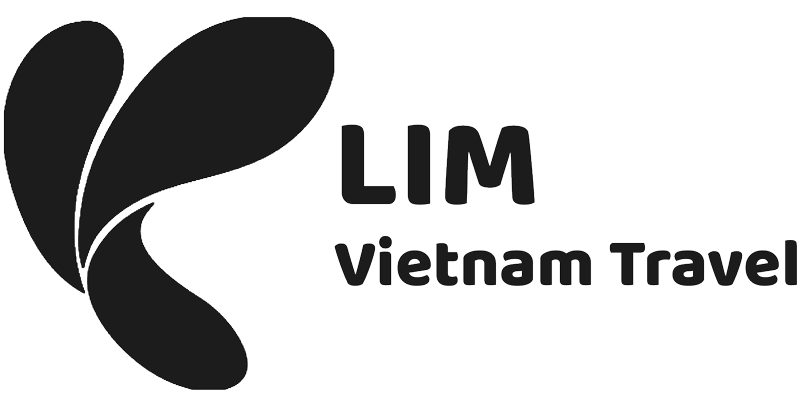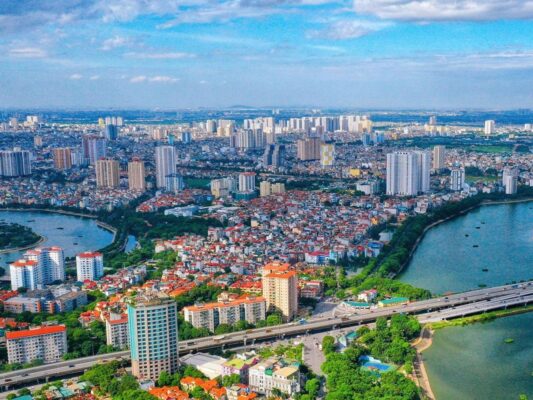Where is Sapa Vietnam: Embrace the Spectacular Beauty of North
Where is Sapa Vietnam? Known for its stunning terraced rice fields, vibrant hill tribes, and breathtaking landscapes, Sapa is a popular destination for travelers seeking an authentic cultural experience and outdoor adventures. Join us as we explore the beauty and allure of Sapa, Vietnam, and discover what makes it a must-visit destination in Southeast Asia!
Where is Sapa Vietnam?
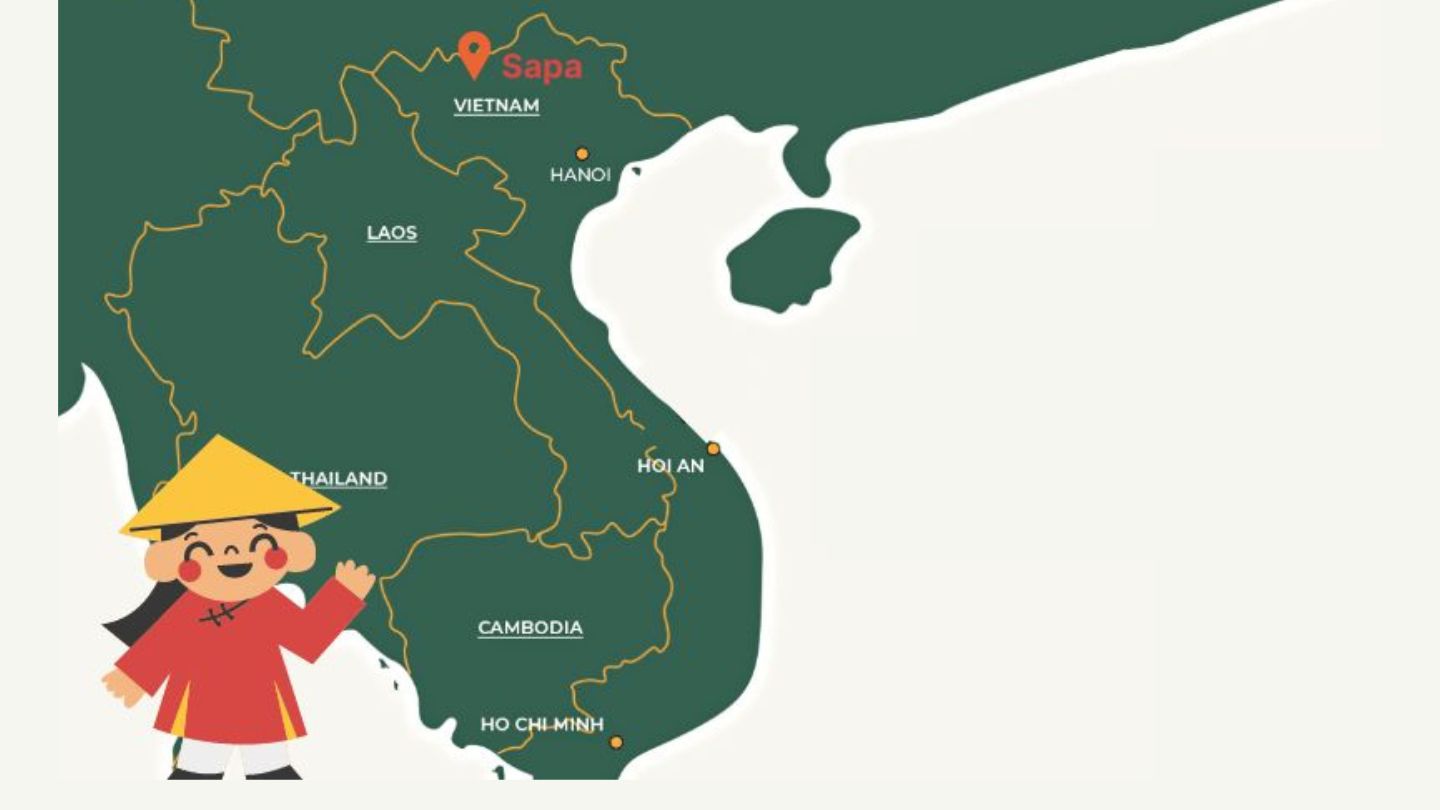
Sa Pa, located in Lao Cai Province in Vietnam’s Northwest region, covers 685 square kilometers with a population of 70,663 as of 2022. The town center is at Sa Pa ward and serves as a key market and tourist destination.
Sa Pa attracts visitors with its vibrant cultural tapestry, home to diverse ethnic groups like the Hmong, Dao (Yao), Giáy, Xa Pho, and Tay. This mountainous town is renowned for its scenic beauty and offers a unique glimpse into the traditions and lifestyles of Vietnam’s ethnic minorities.
Weather in Sapa
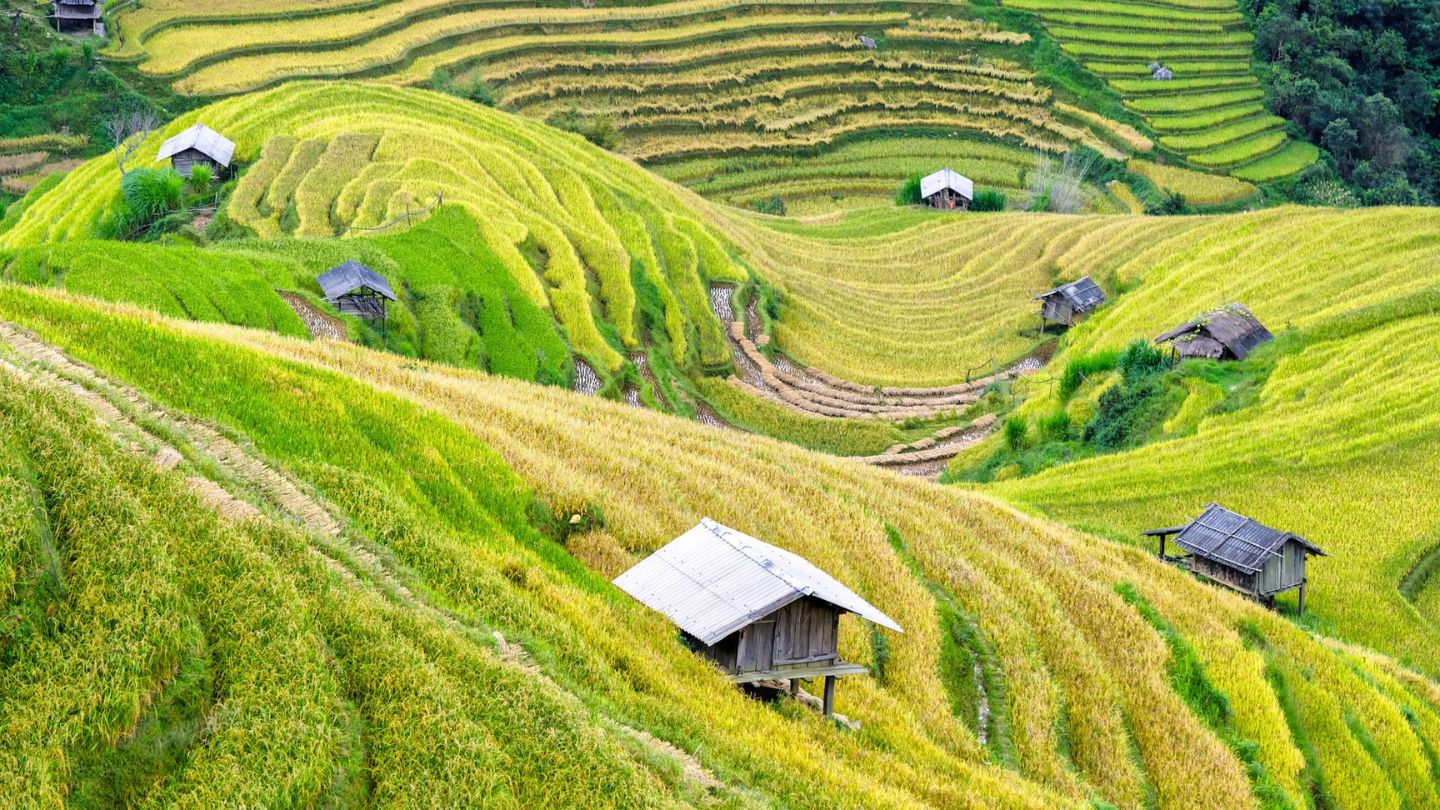
Sapa has four seasons, each with its own special feel. Summer brings warmth and humidity, while winter is cold and dry, sometimes with snow. Autumn and spring are the ideal times to visit Sapa because the weather is mild. The town becomes a beautiful sight with colorful leaves, making it perfect for hiking, trekking, and exploring the scenery.
Best Time to Visit Sapa
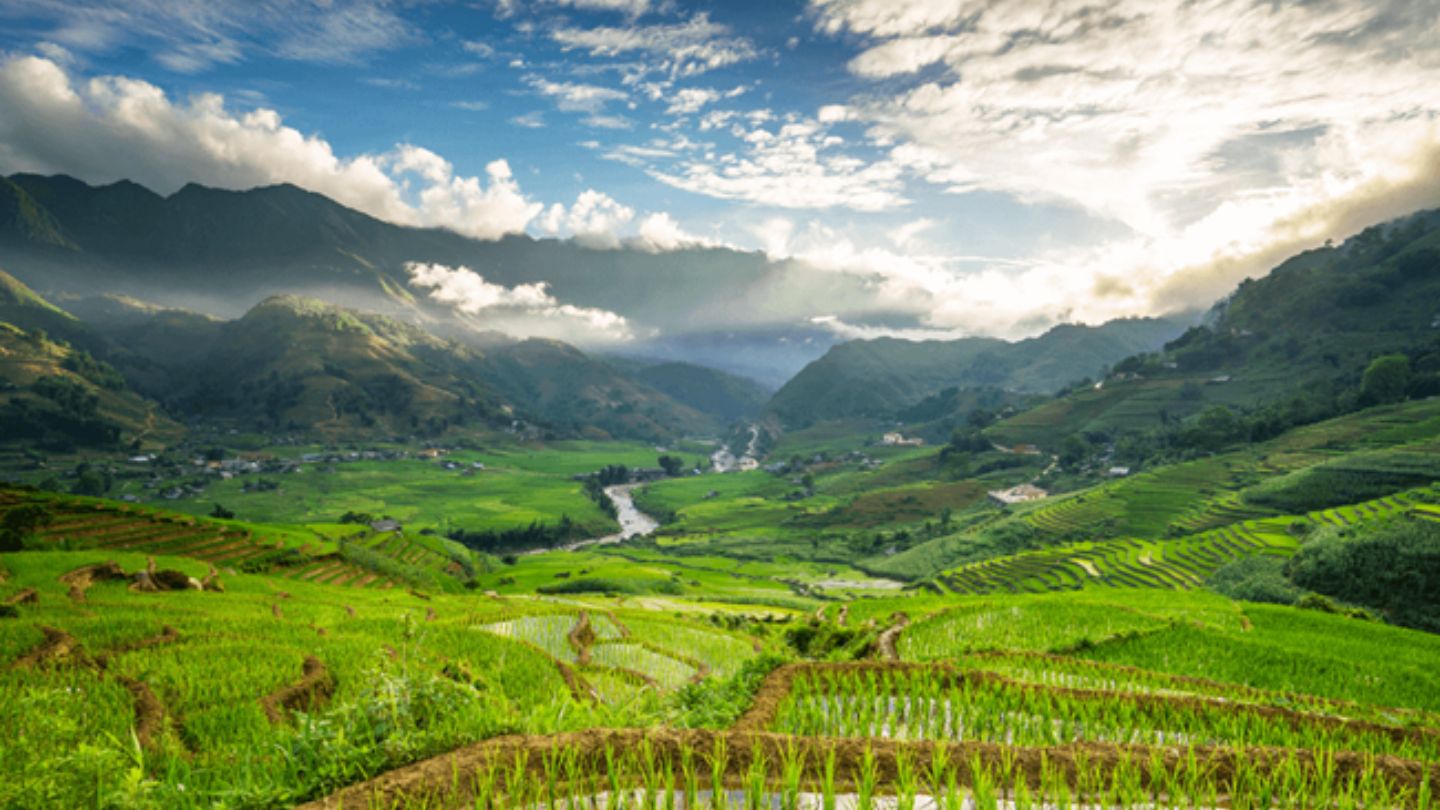
- The ideal times to visit Sapa are from September to November and March to May. These months offer pleasant weather with clear skies and cool temperatures, ideal for outdoor activities like hiking.
- In September and October, the rice fields turn golden yellow during the harvest season, creating a stunning sight.
- From March to May, Sapa enjoys mild weather with plenty of sunshine and blooming flowers, perfect for trekking and exploring the picturesque landscapes. Temperatures typically range from 15°C to 25°C during this period.
However, from December to February, Sapa experiences cold weather with occasional snowfall, making outdoor activities like trekking less favorable. Despite the charm of winter, it may not be the best time for extensive outdoor adventures due to the chilly temperatures.
How to Get to Sapa, Vietnam?
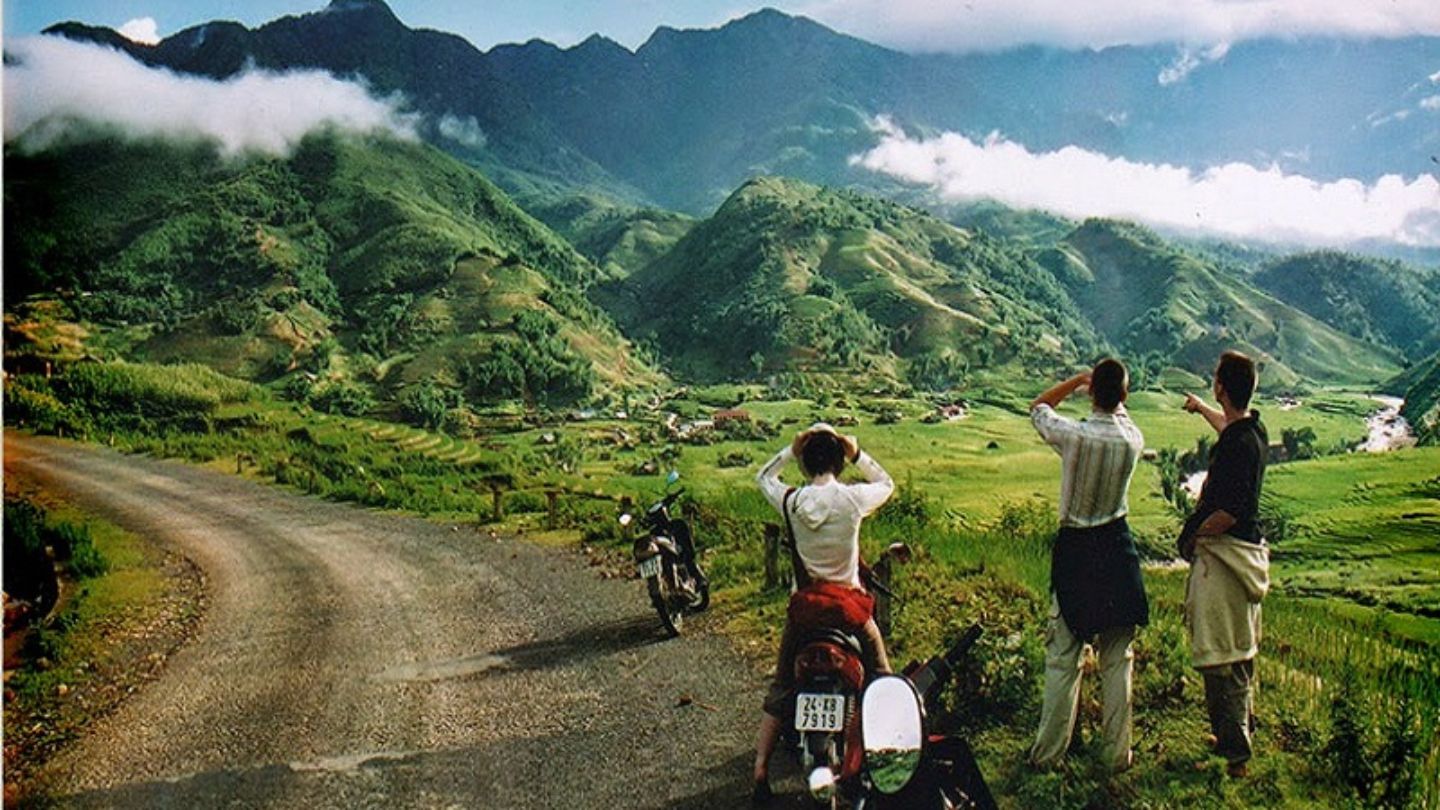
Where is Sapa Vietnam? Getting to Sapa, Vietnam is an adventure in itself, with several transportation options to choose from.
Sleeper Bus
If you’re looking for comfort and convenience, consider taking a sleeper bus from Hanoi. These buses offer trips with reclining seats or beds, allowing you to rest and wake up in Sapa refreshed and ready to explore. We recommend some popular brands of sleeper buses such as Sao Viet Bus, HK open tour, G8 Sapa Open Tour,…
Motorbike
For the more adventurous traveler, hopping on a motorbike is a thrilling way to journey to Sapa. You can enjoy the flexibility of stopping wherever you please to soak in the stunning landscapes along the way. Just make sure you’re comfortable with long rides and varying road conditions.
Train
Traveling from Hanoi to Sapa by train offers convenient options like the Chapa Express Train and Family Express Train. These trains provide comfortable overnight journeys, equipped with cozy cabins for a relaxing experience. They’re popular choices among travelers seeking a scenic and hassle-free way to reach the picturesque landscapes of Sapa, Vietnam’s northern highlands.
Cuisine in Sapa
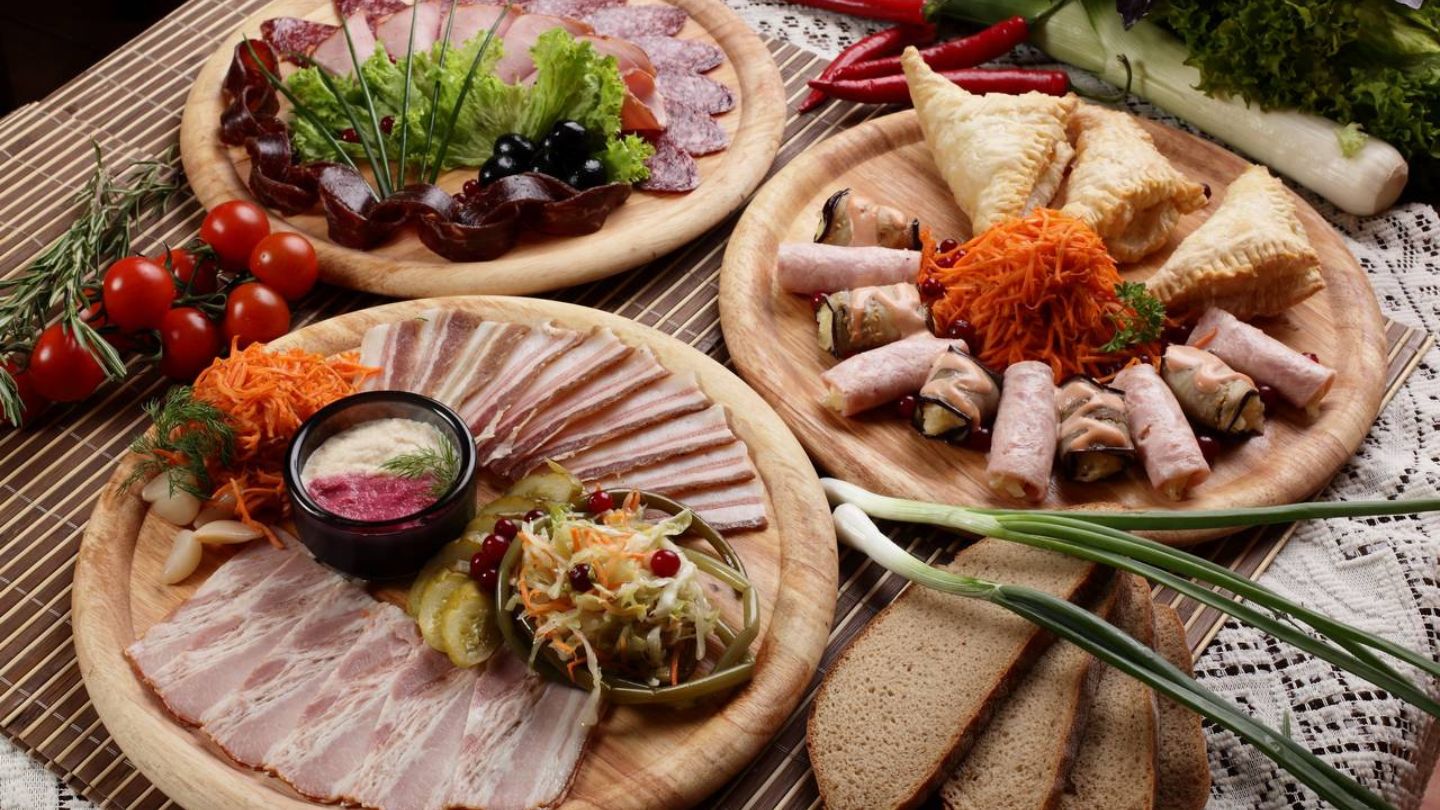
In Sapa, Vietnam, you can savor a delightful array of local cuisines that reflect the region’s rich cultural diversity. Here are some must-try dishes in Sapa:
- Thang Co: A traditional dish made with horse meat and offal, rich in flavors unique to the region.
- Com Lam: Sticky rice cooked in bamboo tubes, offering a delightful texture and aroma.
- Smoked Buffalo Meat: Savory and tender, this specialty dish is a must for meat lovers.
- Bamboo Shoots Stir-fried with Pork: Fresh and crunchy, a perfect complement to any meal.
- Grilled Salmon Trout: Fresh from the mountain streams, highlighting Sapa’s natural bounty.
- Muong Khuong Fermented Pork: Tangy and flavorful, a local favorite for its unique taste.
- Thit Lon Cap Nach: Roasted pork belly, known for its crispy skin and succulent meat.
- Banh Day and Thang Den: Conclude your meal with sticky rice cakes and a sweet dessert soup made with black sesame and ginger, offering a delightful end to your culinary journey through Sapa.
Accommodation in Sapa
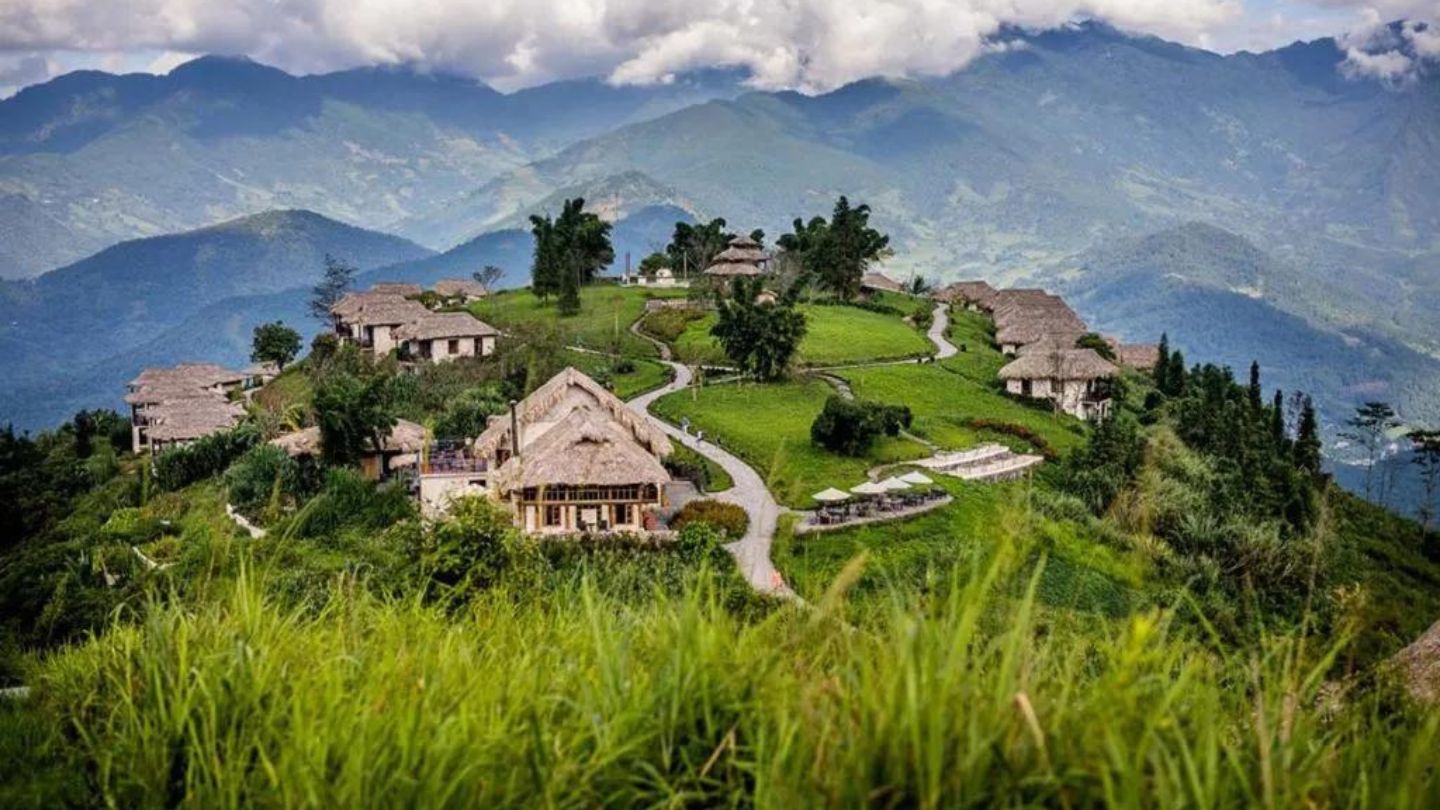
Here are some types of accommodation you can find in Sapa:
- Homestays: Experience local culture by staying with families, offering cozy rooms and homemade meals.
- Hotels: Choose from various hotels, ranging from budget-friendly options to luxury establishments with scenic views of the mountains.
- Resorts: Enjoy upscale amenities and tranquil surroundings in resorts scattered around Sapa, perfect for relaxation.
- Hostels: Budget-friendly accommodations with shared dormitories and communal areas, ideal for solo travelers and backpackers.
- Eco-Lodges: Stay in eco-friendly lodges nestled in nature, promoting sustainability and offering serene environments.
- Guesthouses: Discover charming guesthouses with personalized service and a homely atmosphere, often run by local hosts.
- Mountain Retreats: Retreat into the mountainside with accommodations offering peace and breathtaking views, perfect for nature lovers.
Top 12 Spectacular Tourist Attractions in Sapa
In Sapa, Vietnam, you’ll discover a treasure trove of stunning attractions that highlight the region’s natural beauty and cultural heritage.
Ham Rong Mountain
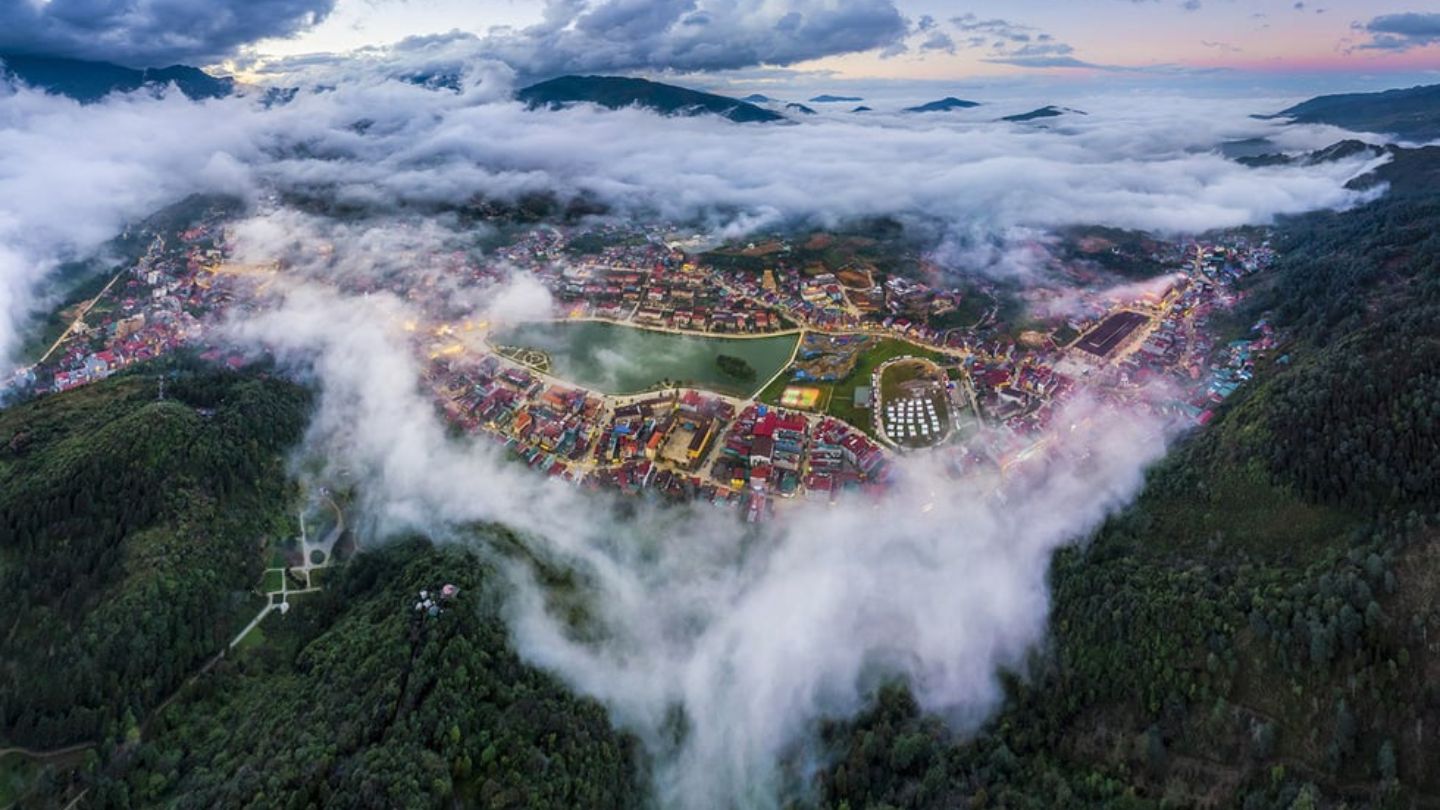
Ham Rong Mountain offers panoramic views of Sapa town and the Hoang Lien Son mountain range, making it perfect for leisurely walks or hikes to enjoy breathtaking vistas and colorful gardens.
Sapa Stone Church
The Sapa Stone Church, also known as the Holy Rosary Church, is a charming French Gothic-style building dating back to the early 20th century. It serves as a cultural and historical landmark, where visitors can admire its architectural beauty and attend peaceful services.
Cat Cat Village Sapa
Cat Cat Village, nestled in a picturesque valley, provides a glimpse into traditional Hmong ethnic life with its quaint wooden houses, terraced rice fields, and vibrant cultural performances. It’s a great place to explore local handicrafts, try traditional cuisine, and learn about age-old customs.
Fansipan Mountain
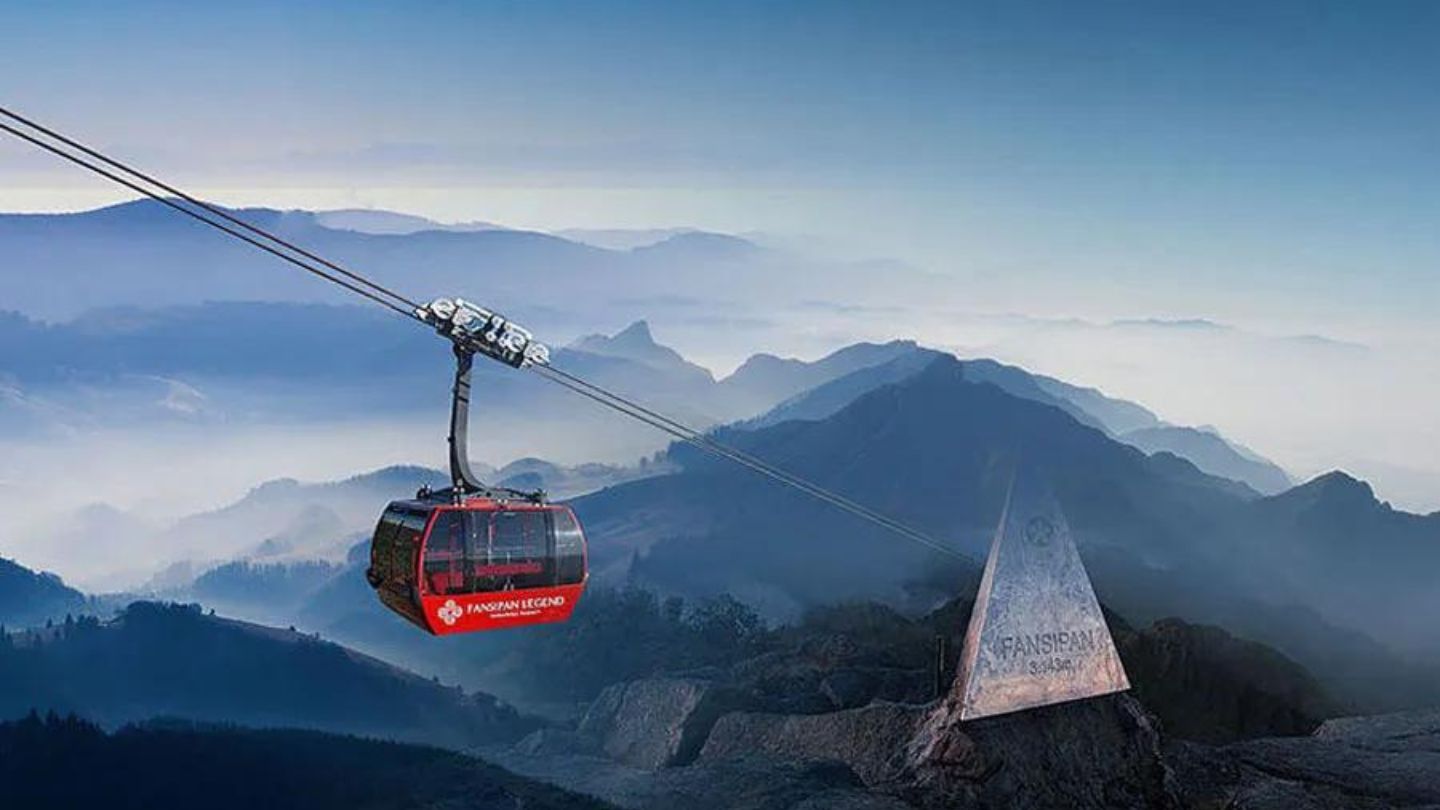
Fansipan Mountain, standing at 3,143 meters, beckons adventurers seeking a challenge with its trekking routes. Known as the “Roof of Indochina,” reaching its summit offers sweeping views of majestic landscapes.
O Quy Ho Pass
O Quy Ho Pass links Lai Chau province to Lao Cai province, standing as one of Vietnam’s top mountain passes. It reaches heights exceeding 2,000 meters and offers breathtaking vistas of mountains, valleys, forests, hills, and rivers.
Sapa Silver Waterfall
The Sapa Silver Waterfall cascades gracefully from a height amidst dense forests, creating a serene ambiance perfect for relaxation and immersing oneself in nature’s tranquility.
Muong Hoa Valley
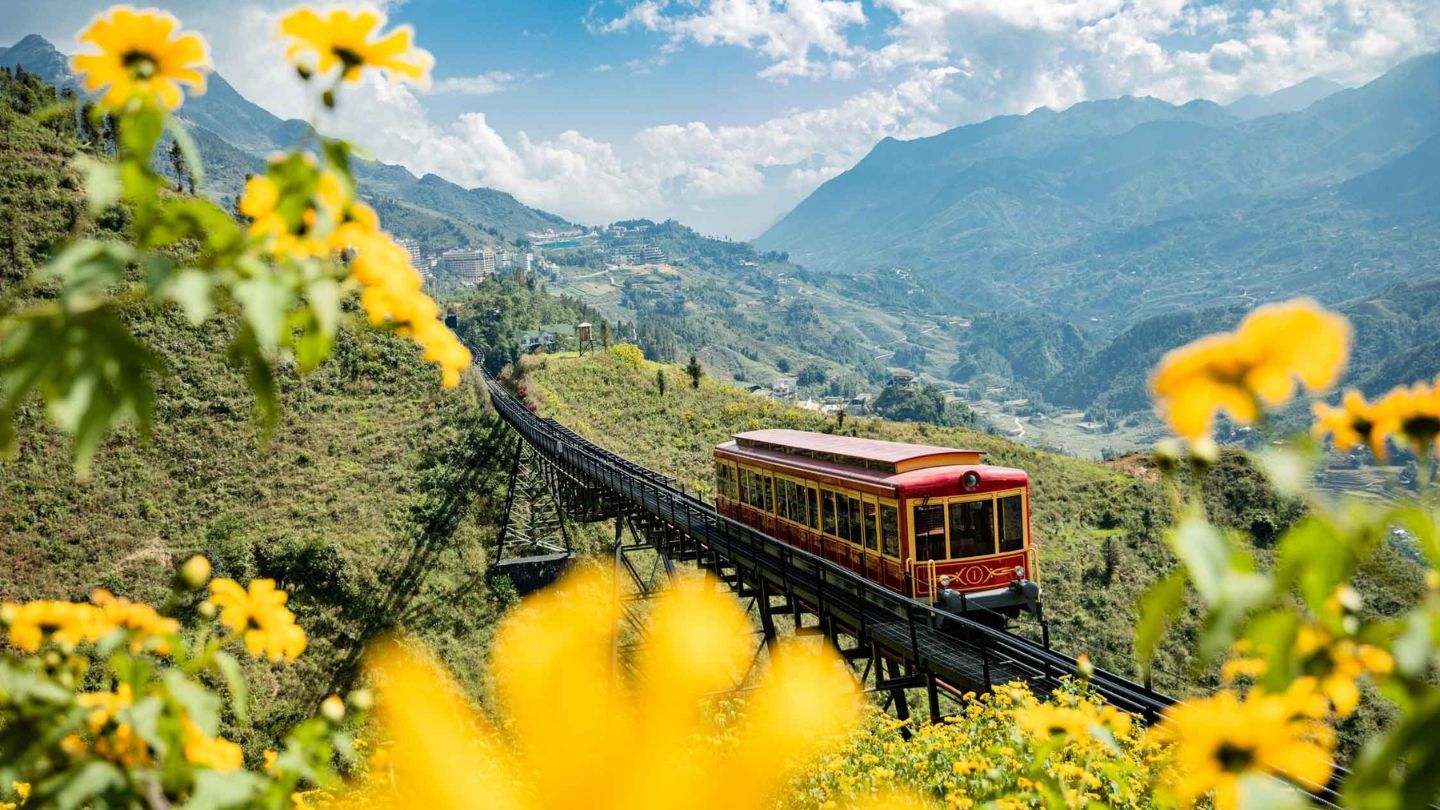
Muong Hoa Valley, nestled in Sapa, Vietnam, stands out as one of the region’s most stunning and picturesque spots. It hosts traditional villages of the Hmong and Dao ethnic groups, adding cultural richness to its natural beauty. Visitors can opt for self-guided exploration or guided tours to delve deeper into the valley’s history and local customs.
Bac Ha Market
Bac Ha Market, a highlight of the Bac Ha Market Tour, is a bustling marketplace in northern Vietnam near Sapa. It’s famous for its vibrant atmosphere and diverse offerings, including traditional handicrafts, textiles, and local produce. Visitors can immerse themselves in the lively culture of the Flower Hmong and other ethnic minorities, making it a must-see destination for cultural exploration.
Sapa Love Market
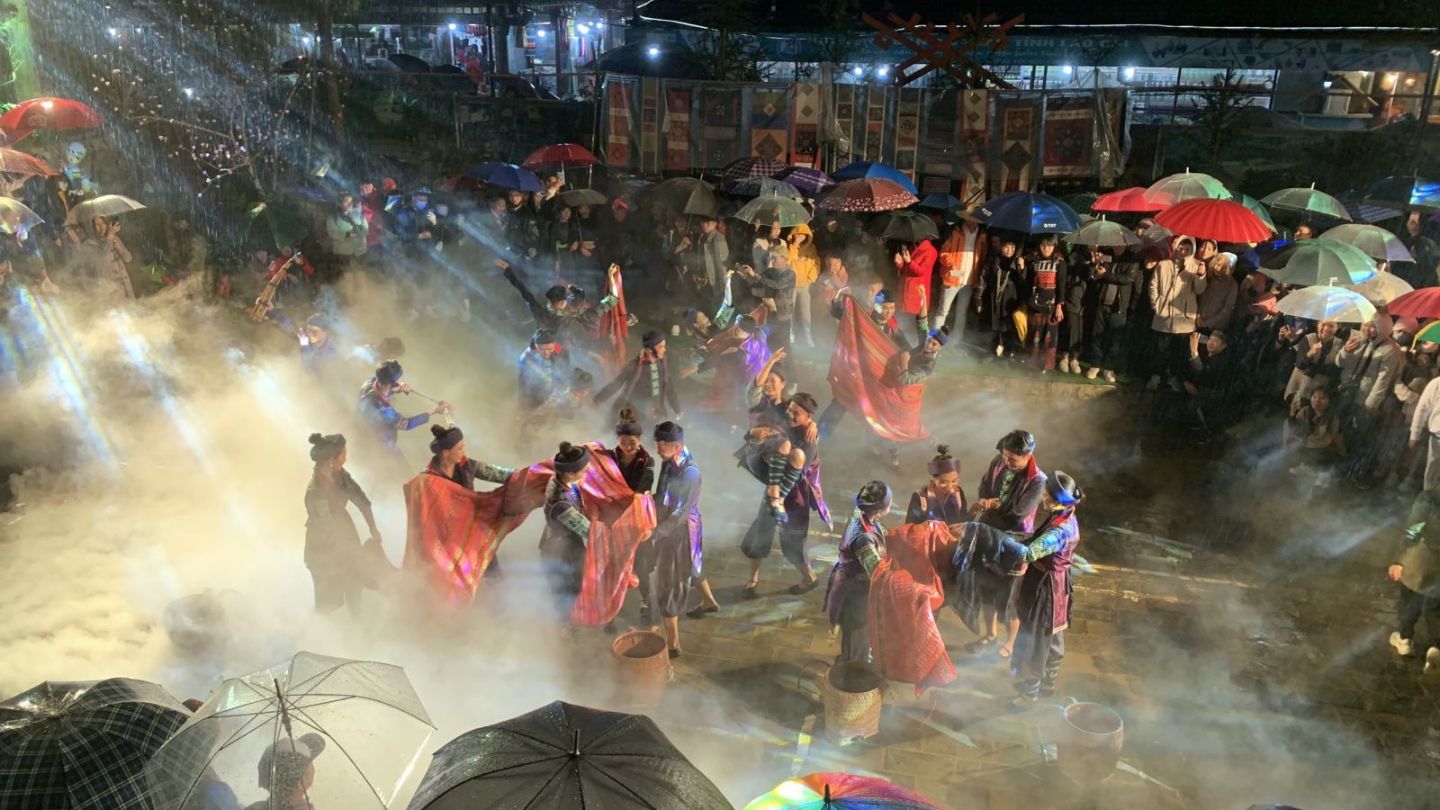
The Love Market in Sapa is renowned for bringing together young people from various ethnic groups to socialize and seek potential partners. It offers a fascinating glimpse into the traditional courting rituals of the Hmong, Dao, and Giay communities. Beyond its cultural significance, visitors can explore stalls selling local handicrafts, textiles, and delicious foods like roasted pork, grilled fish, and sticky rice cakes.
Tram Ton Pass
Tram Ton Pass, also known as Heaven’s Gate, is a majestic mountain pass situated in the Hoang Lien Son range in Northern Vietnam, standing as the highest pass in the country at 1,900 meters above sea level. Connecting Sapa and Lai Chau, it offers awe-inspiring vistas of the mountains and valleys below. The name Heaven’s Gate originates from the stunning views of clouds and the sky visible from the past, especially during sunrise and sunset.
Conclusion
Where is Sapa Vietnam? Sapa is located in the northern part of Vietnam, specifically in Lào Cai Province. It sits amidst the Hoang Lien Son mountain range, known for its picturesque landscapes and rich cultural diversity. Visitors to Sapa can explore terraced rice fields, hike scenic trails, and experience traditional ethnic minority cultures. This region offers a tranquil escape into nature and a chance to immerse oneself in the vibrant traditions of Vietnam’s highlands.
